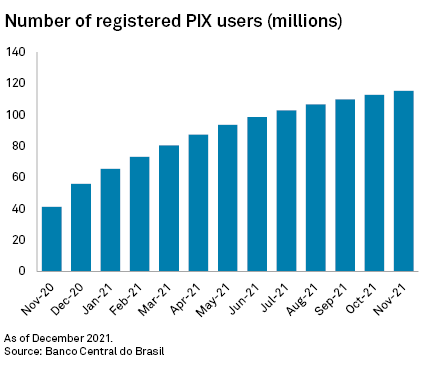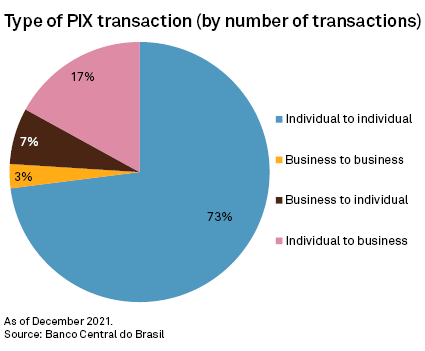Pix and digital payments in Brazil
I came across this story via Benedict Evans' newsletter (it’s not the kind of thing I’d usually track). What I find interesting is this is a hugely successful rollout of a digital payments system done by a central bank. It’s helping real people, including those in poverty.
Meanwhile, crypto tokens are held by crypto bros and middle-class white guys like myself trying to make a quick buck. Just goes to show that innovation doesn’t always come from where you expect.
Source: Pix breaks ground in Brazil, shakes up payments market | S&P Global Market IntelligencePix, rolled out by the Banco Central do Brasil in Nov. 2020, was built for efficiency and financial inclusion. It now has 107.5 million registered accounts, more than half of the country’s population. One year after implementation, more than half a trillion Brazilian reais were transacted through the low-cost payments system last month. According to central bank data, Pix payments volume is already equivalent to 80% of debit and credit card transactions.
[…]
“Except for very particular transactions, market penetration tends to 99% on all individual transfers,” [Julian Colombo, CEO of banking technology firm N5] added. However, the rollout has not been without hiccups, including kidnapping.
[…]
On a recent Sunday in Rio de Janeiro, a three-member samba band played for a crowded restaurant. At the end, they passed around the tambourine to collect money. One diner apologized, saying he did not have any cash on him. The drummer said, “No problem, I take Pix,” and proceeded to share his code — which can be an email, phone number or other easy-to-remember code — with the diner, who promptly transferred the money his way.
Simple sustainable stories
Some people are easy to follow online. They have one social media account to which they post regularly, and back that up with a single website where they expand on those points.
Stowe Boyd, whose work I’ve followed (or attempted to follow) for a few years now, is not one of these people. In fact, the number of platforms he tried earlier this year prompted me to get in touch with him to ask just how many platforms now had his subscribers' email addresses.
Ironically, it was only last week that I decided to support Stowe’s latest venture via Substack. However, in a post yesterday he explains that he’s going ‘back to square one’:
I won’t recapitulate the many transitions that have gone on in my search for the 'right’ newsletter/subscription technologies over the past year. But I have come to the conclusion that I am more interested in growing the community of Work Futures readers than I am in trying to make cash flow from it.The thing I've learned about posting things to the internet over the last twenty years is that nobody cares. People support things that reflect who they believe themselves to be right now. That changes over time.
So if you’re putting things online, you have to make sure it works for you. Even the most fun jobs imaginable can become… something else if you focus too much on what a fickle audience wants.
As I said, I am motivated to take these steps in part by the desire to simplify my daily activities, and shelve work patterns that suck time. But I am equally motivated by making the discourse around these topics more open, while encouraging people to support Work Futures, but in that order of importance.Openness always wins. You can support Stowe's work via donations, and my work via Patreon.
Source: Work Futures

